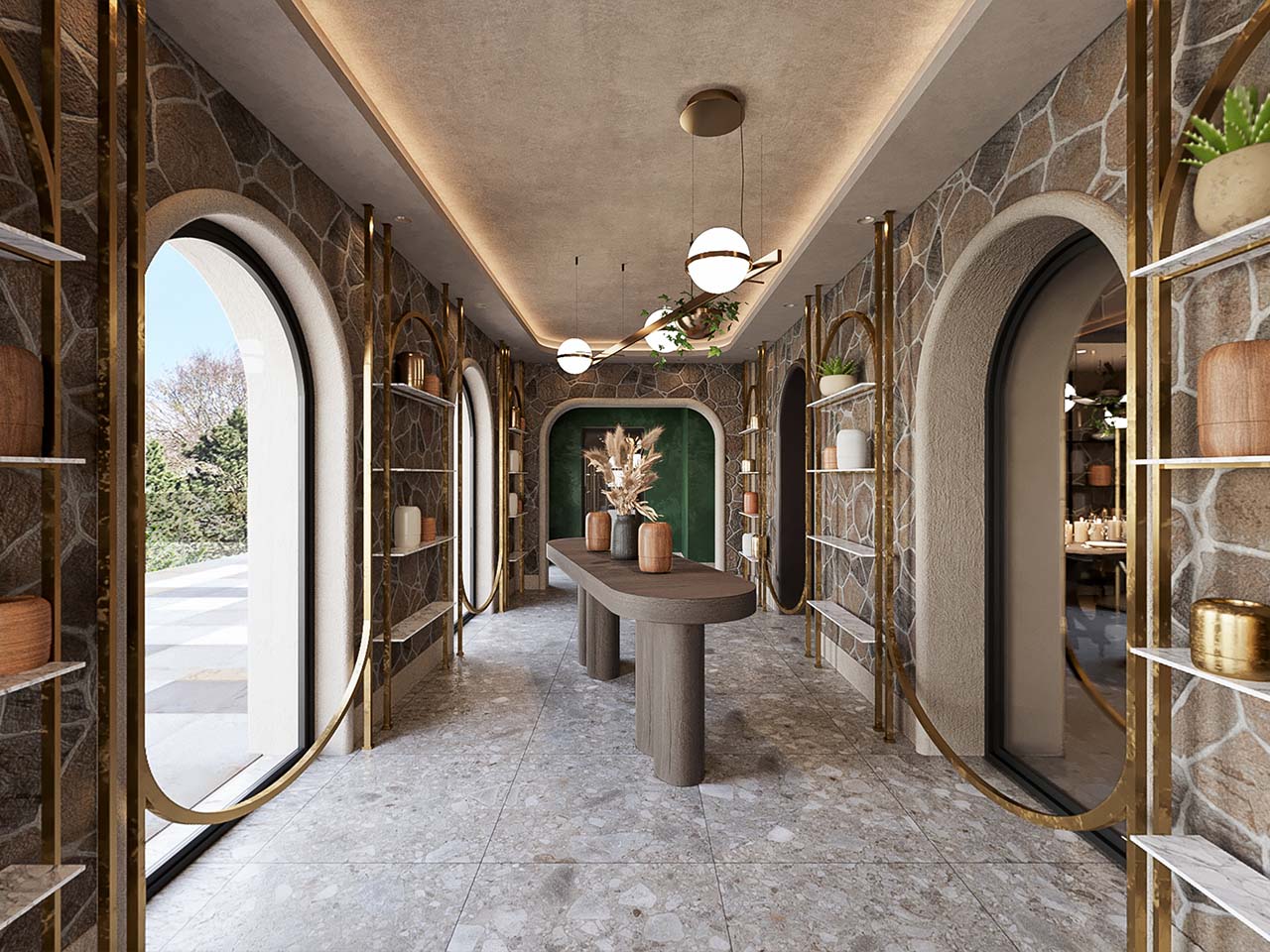Interior design is an essential component of the restaurant industry. It plays a vital role in attracting customers, enhancing their dining experience, and ultimately contributing to the overall success of the restaurant. The design of a restaurant should be a reflection of its cuisine, style, and ambiance. The use of appropriate lighting, material selection, and layout are all crucial factors in creating an inviting and comfortable atmosphere for diners. In this blog post, we will explore the importance of interior design in the success of the restaurant industry and hospitality industries. We will also discuss how lighting and material selection play a significant role in achieving a harmonious design.

Importance of Interior Design in the Restaurant Industry:
The restaurant industry is highly competitive, and interior design can make or break a restaurant’s success. Customers are not just looking for good food; they also want an experience that is memorable, unique, and enjoyable. Interior design is an essential element of the overall dining experience. It sets the tone for the meal, creates a mood, and reflects the restaurant’s theme and identity. The interior design of a restaurant should be consistent with its brand identity, menu, and target market. For example, a high-end restaurant may have a sophisticated, elegant interior design with expensive materials, whereas a casual eatery may have a more relaxed and informal ambiance. The interior design should also consider the type of cuisine served, the location, and the clientele.
The Layout of the Restaurant:
The layout of a restaurant is an important aspect of interior design. It should be functional and efficient, providing easy access to the kitchen and restroom while maximizing the seating capacity. The seating arrangement should be comfortable and appropriate for the restaurant’s concept. For instance, a fine dining restaurant may opt for intimate seating arrangements, while a casual restaurant may offer communal tables.
Lighting:
Lighting is a crucial element of interior design that can significantly impact the restaurant’s atmosphere. Proper lighting can create an ambiance that complements the restaurant’s theme and mood. Lighting can also affect the customer’s perception of the food’s taste and quality. The right lighting can make the food appear more appetizing and enhance the dining experience. There are several types of lighting that can be used in a restaurant, including ambient, task, and accent lighting. Ambient lighting provides general illumination and sets the overall mood of the restaurant. Task lighting is used in specific areas, such as the kitchen or bar, to provide functional illumination. Accent lighting is used to highlight specific features, such as artwork or architectural details.
Material Selection:
Material selection is another essential aspect of interior design that can significantly impact the restaurant’s ambiance. The choice of materials should be consistent with the restaurant’s brand identity and theme. High-quality materials, such as natural stone, wood, and metal, can create a sophisticated and elegant atmosphere. Conversely, lower-quality materials, such as plastic or synthetic materials, can create a cheap and uninviting ambiance. The material selection should also consider the restaurant’s durability and ease of maintenance. Restaurant interiors are subject to high traffic, spills, and stains. Therefore, the materials should be able to withstand wear and tear and be easy to clean and maintain.
Conclusion:
In conclusion, interior design is a crucial component of the restaurant industry and hospitality industries. The design of a restaurant should be a reflection of its cuisine, style, and ambiance. The use of appropriate lighting, material selection, and layout are all crucial factors in creating an inviting and comfortable atmosphere for diners. The restaurant’s interior design should be consistent with its brand identity, menu, and target market. High-quality materials, proper lighting, and a functional layout are essential to creating a memorable and enjoyable dining experience for customers.
Citations:
- Bellini, C., & D’Orazio, F. (2017). The Role of Interior Design in Restaurant Experience: A Systematic Literature Review. Journal of Foodservice Business Research, 20(5), 475-488. doi: 10.1080/15378020.2017.1343025
- Cao, Y., & Gretzel, U. (2016). Transforming the Dining Experience: A Review of Restaurant Technology Innovations. Journal of Hospitality Marketing & Management, 25(7), 766-783. doi: 10.1080/19368623.2016.1157527
- Chittenden, E. (2019). Restaurant design: how it influences your dining experience. Retrieved from https://www.bbc.com/news/business-47608259
- Cho, Y., & Lee, H. (2020). The Impact of Restaurant Interior Design on Customers’ Emotional Response, Satisfaction, and Behavioral Intentions. International Journal of Hospitality & Tourism Administration, 21(3), 335-357. doi: 10.1080/15256480.2019.1687173
- Kim, M., & Seo, S. (2018). The Effect of Restaurant Atmosphere on Customer Satisfaction and Behavioral Intentions. International Journal of Hospitality & Tourism Administration, 19(4), 409-429. doi: 10.1080/15256480.2017.1403332
- Liu, H., & Jang, S. (2016). Perceived Restaurant Environmental Factors and Customer Behavioral Intentions: Mediating Effects of Positive Emotions. International Journal of Hospitality & Tourism Administration, 17(2), 156-182. doi: 10.1080/15256480.2015.1041117
- Pizam, A., Shapoval, V., & Ellis, T. (2017). The Role of Restaurant Interior Design in Consumer Choice: A Study of Young Adult Consumers. Journal of Foodservice Business Research, 20(2), 139-157. doi: 10.1080/15378020.2017.1275354

